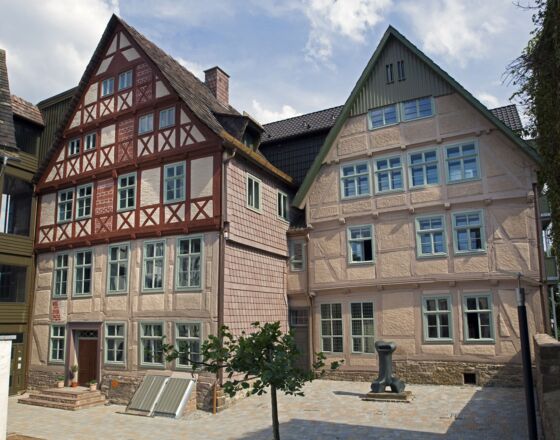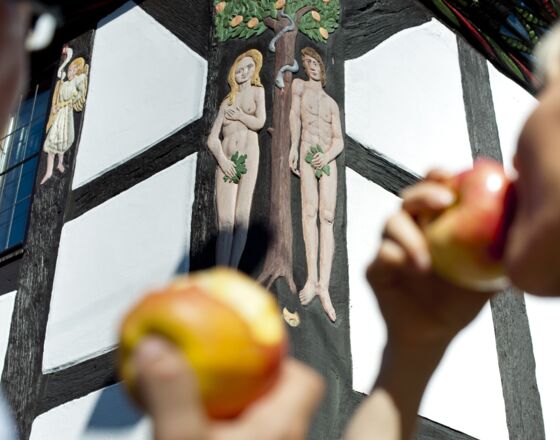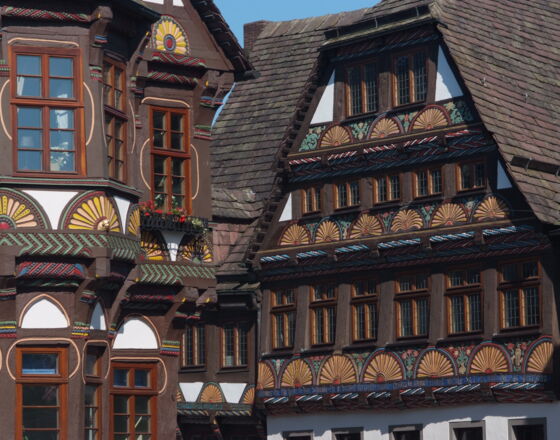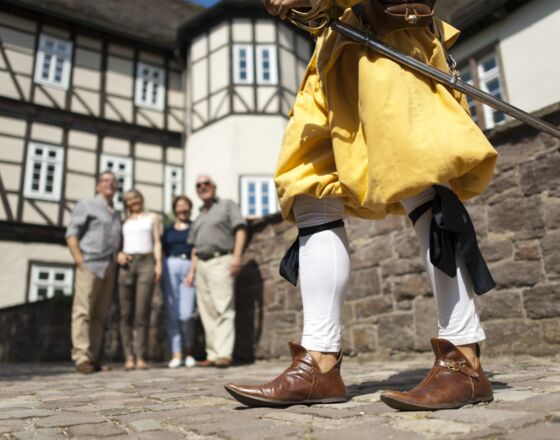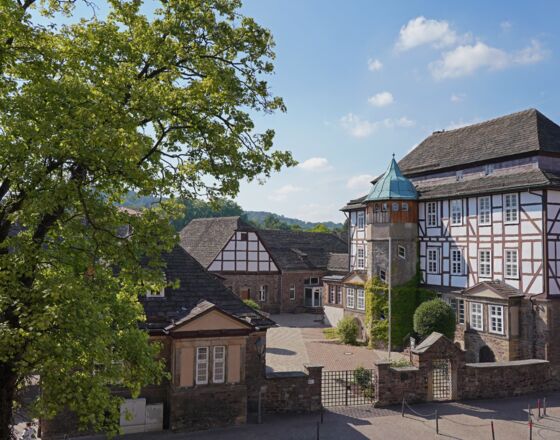Highlights
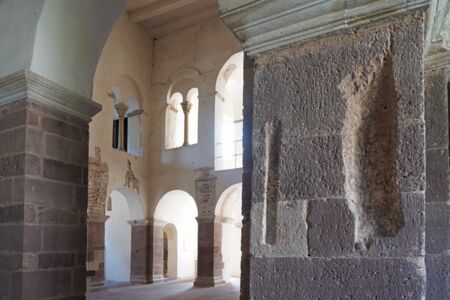
Corvey World Heritage Site
Experience a heritage of mankind just outside of Höxter. The former Benedictine monastery of Corvey was founded in the 9th century and had a significant influence on the political and religious processes in large parts of Europe. It was one of the most important monasteries of the early Middle Ages and is today certainly the most outstanding sight in the Weserbergland. However, it is not only the architecture that makes a visit worthwhile. Corvey has always been a centre of knowledge, education and culture. In addition to the permanent historical exhibitions and year-round guided tours, the museum also presents top-class cultural events.
Read more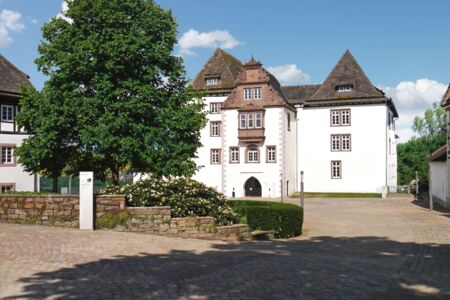
Porcelain Manufactory Fürstenberg
The castle ensemble of the Fürstenberg porcelain manufactory stands for 300 years of porcelain art in the Weserbergland region. In a journey through time from the beginnings of the porcelain manufactory in Fürstenberg to the present day, visitors not only encounter valuable individual pieces and design icons, they also learn about the background of porcelain production and can become active themselves. In the museum, the former hunting lodge of the dukes of Brunswick, the motto at many stations is: "Touching allowed".
Read more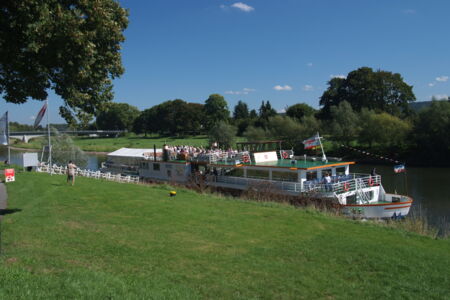
Weser boat trip
When visiting the Weserbergland, a boat trip on the "Flotte Weser" is almost a must. You will get to know the Weserbergland from a completely different perspective. On the leisurely trip you have time to enjoy the landscape at your leisure. The section between Bad Karlshafen and the Corvey World Heritage Site is particularly beautiful. In the morning, the Weser ship "Höxter" starts the scheduled trip in Bad Karlshafen. From here, it continues via Höxter to Corvey before returning upstream to Bad Karlshafen.
Read more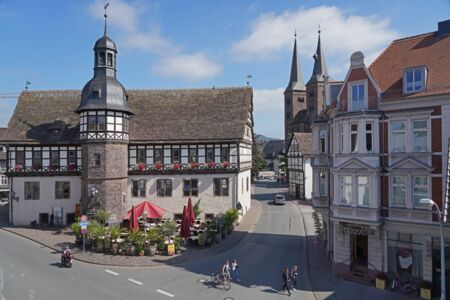
Weser Cycle Route
The Weser Cycle Route runs for 520 kilometres along the Weser River and passes through the federal states of Hesse, North Rhine-Westphalia, Lower Saxony and Bremen. It has been voted the most popular river cycle route in Germany several times. The first 200 km through the Weserbergland region with its historic half-timbered towns and cultural sights is certainly one of the most attractive sections.
Read moreContact
Tourist-Information Höxter
Weserstraße 11
37671 Höxter
Tel. 05271 963 4242
info@hoexter-tourismus.de
Travel options
Car:
From the north: BAB 7 Hamburg-Hannover, BAB 2 direction Bielefeld, exit Lauenau, via B 83 and B 64 to Höxter;
From the south: BAB 7 to Hann.-Münden, via B 80 and B 83 along the Weser to Höxter;
From the west: BAB 44 Dortmund-Kassel , BAB 33 to the Paderborn Zentrum junction, via the B 64 to Höxter;
From the east: Berlin, BAB 2 Braunschweig-Salzgitter, BAB 7 towards Kassel to exit Seesen, B 64 to Höxter;
Rail:
The Paderborn - Altenbeken - Kreiensen line offers boarding and alighting facilities in Höxter-Kernstadt (Höxter-Rathaus stop) and the villages of Ottbergen, Godelheim and Lüchtringen. You can reach the long-distance network at the Altenbeken and Kreiensen interchanges.
Aeroplane:
Paderborn-Lippstadt and Hanover airports are about 50 km and 90 km from Höxter respectively.
Motorhome:
Motorhome supply and disposal station on the fairground located directly behind the Weser bridge in the immediate vicinity of the historic old town.
Bicycle:
Höxter lies at the intersection of the R 1 and R 99 national cycle routes. The R 1 runs west-east from Calais to Kaliningrad (formerly Königsberg) and is to be extended to St. Petersburg. The R 99 runs along the Weser from its origin in Hann.-Münden to Bremen.


